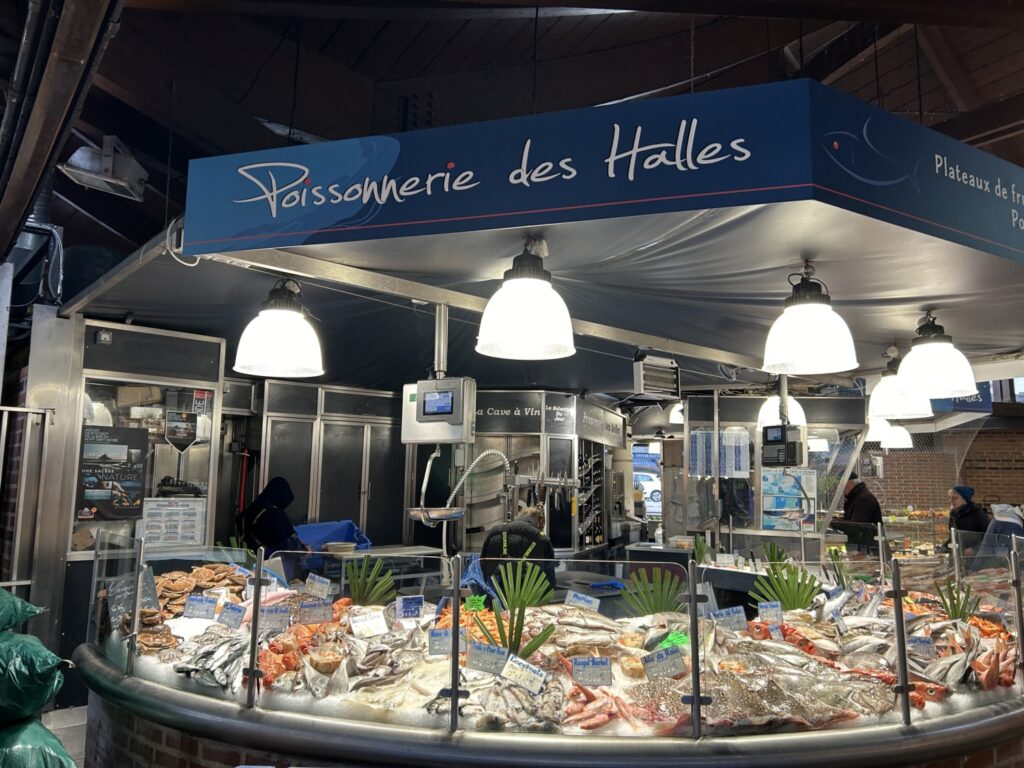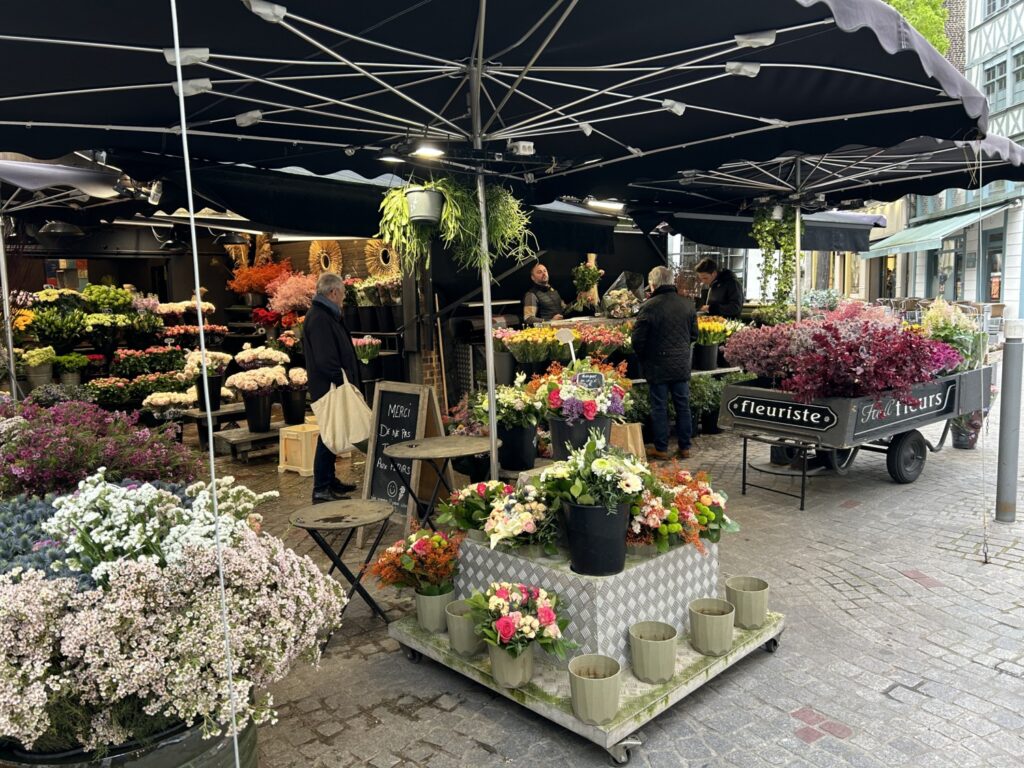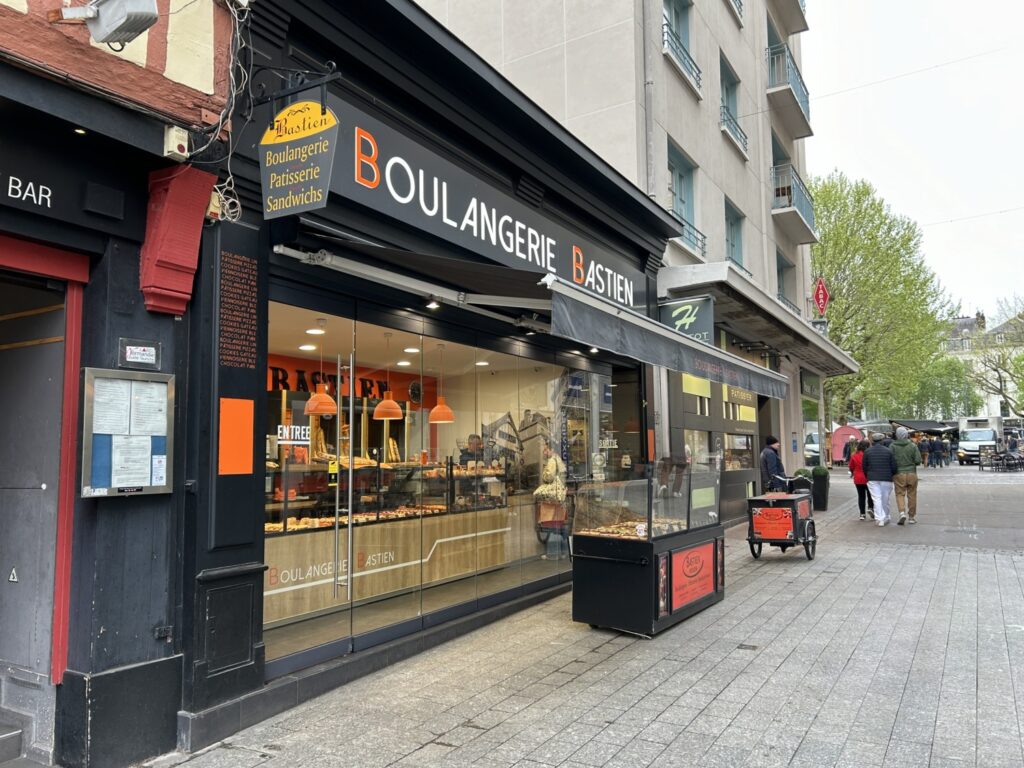During our one day in France, Tom and I decided to visit Rouen with the famous Cathedral of Rouen. The Cathedral is a gorgeous example of church architecture, but is also the burial place of some famous kings. Tom especially wanted to see the gravesite of Rollo, the first ruler of Normandy, from whom he believes he is descended.
Rouen has been an important center of history and industry since the middle ages. It’s wealth was founded on wool and textile factories, although there is little sign of that today. The Old Town part of Rouen is filled with half-timbered houses built from 1400 to 1600. When the Germans invaded Rouen during World War II they burned most of the city. Only this small section of Old Town survived.
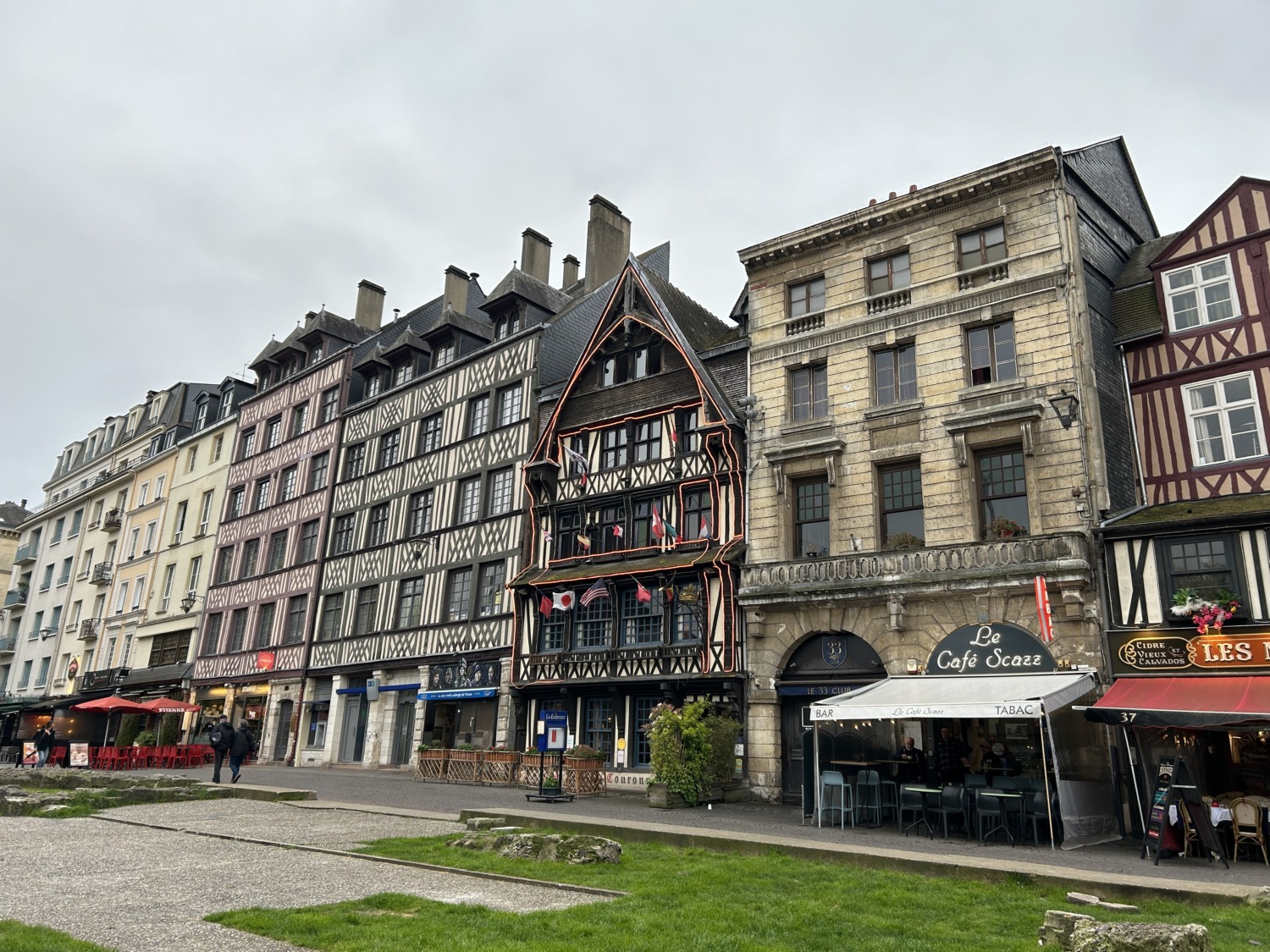
We took a shore excursion to get to Rouen, which means we climbed on a bus and rode about 90 minutes into Rouen. Our shipped docked in Le Havre. While we were on the bus, our guide, Adele, gave us some history of the city of Le Havre and of Rouen. She has lived all her life in Le Havre and loves it. It looked like a thriving industrial city.

Once we reached Rouen, we unloaded from the bus, and followed Adele through some twists and turns to the Old Town. We were walking along through a modern, industrial city, and then, suddenly, we turned a corner and it changed into a medieval town. The contrast was so stark that I felt like I was at Disneyworld and had wandered into another “land.”
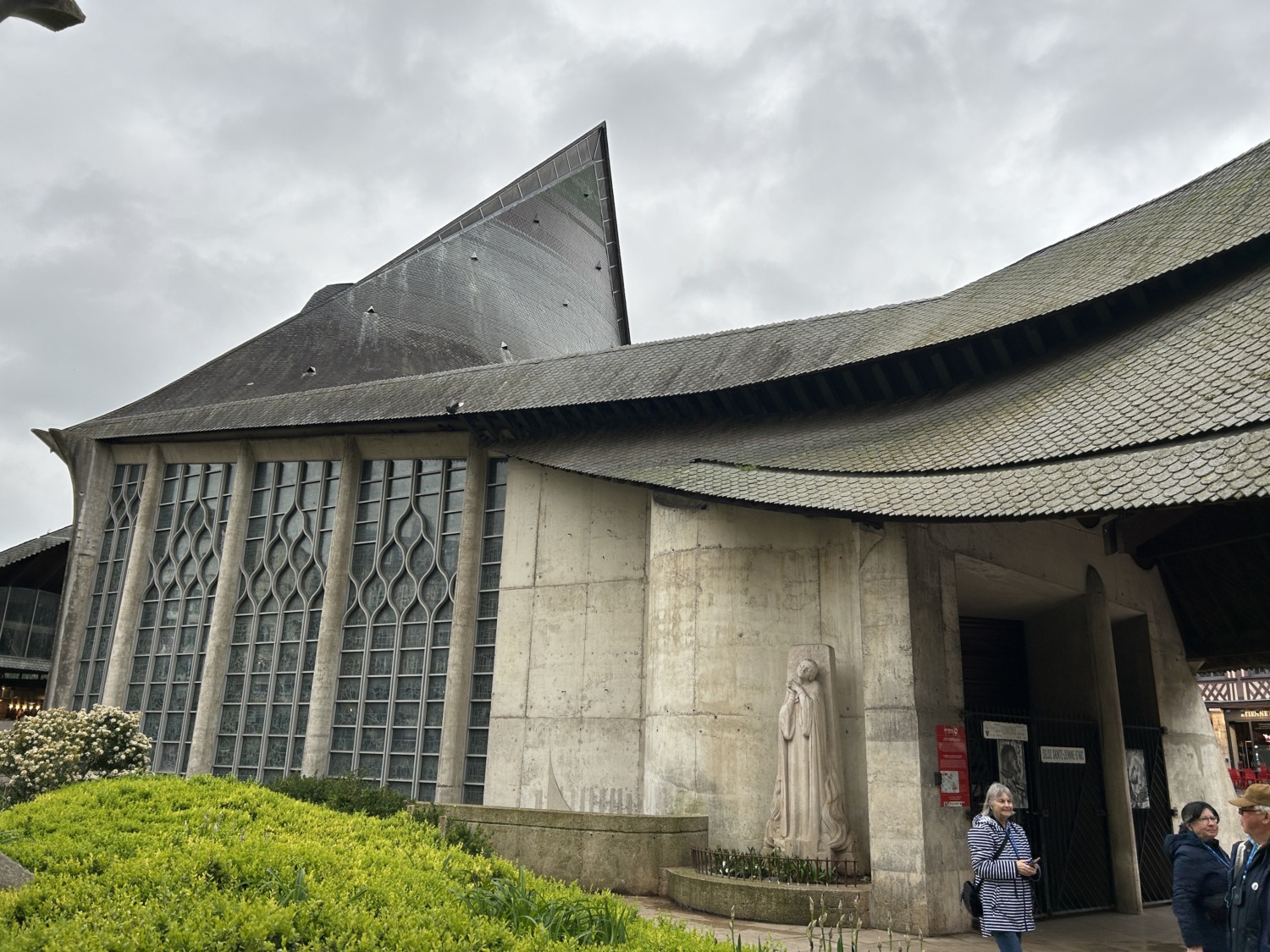
Adele gave us a brief history of the town, then pointed out some of the highlights. Rouen was where Joan of Arc was burned at the stake and our tour started at the Church of St. Joan of Arc. Adele pointed out the place where she was burned and gave us a little background. We also saw all the beautiful half-timbered houses surrounding the square.
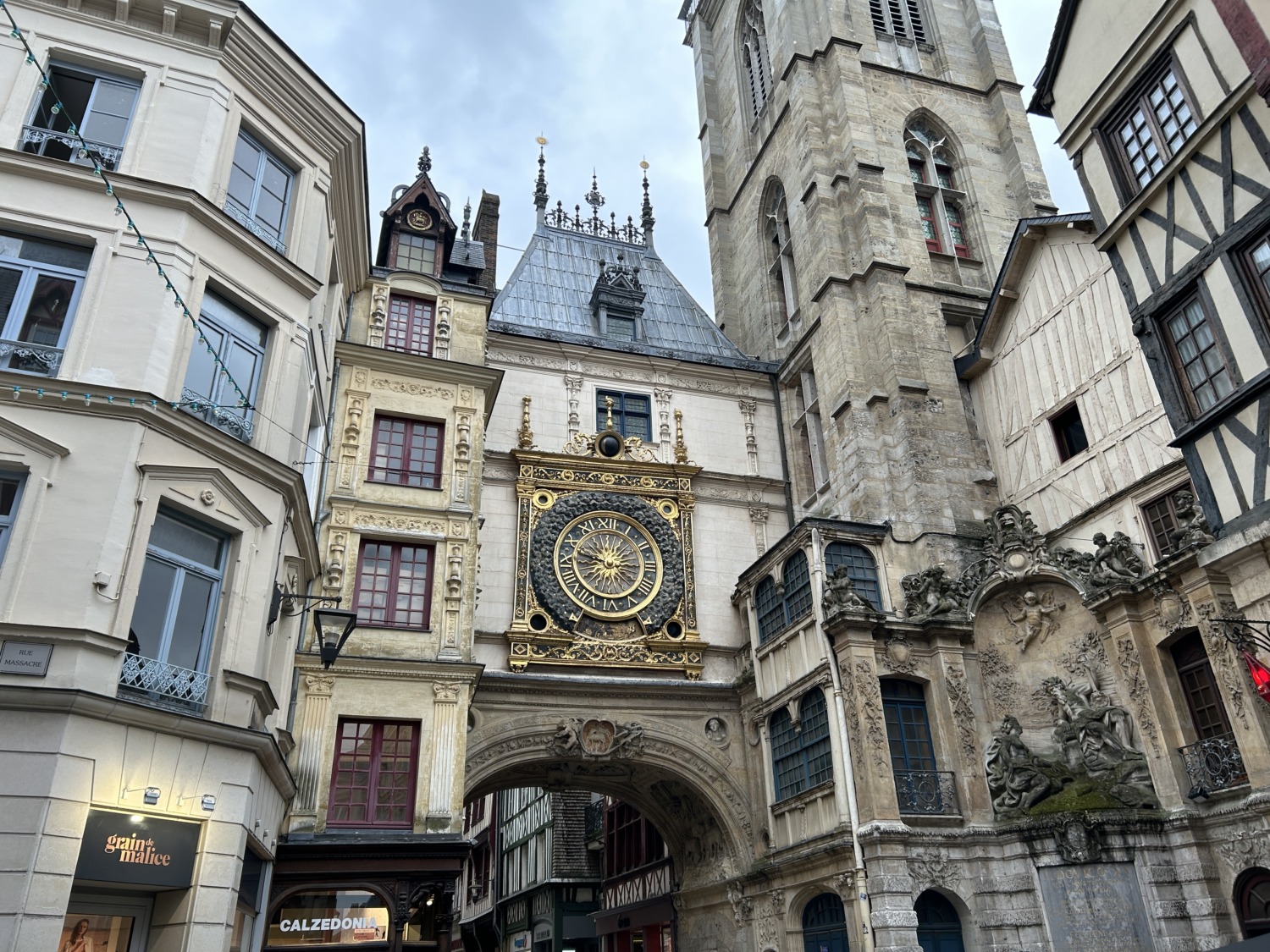
We walked underneath the Clock Tower and Adele pointed out the parts and the symbolism. The Great Clock, or Gros-Horloge, is a 14th century astronomical clock. The clock itself was made in 1389. A facade was added when the clock was moved to its current position in the arch over the Rue du Gros-Horloge. The clock was electrified in 1920 and restored in 1997.
The Renaissance facade represents a golden sun with 24 rays on a starry blue background. The dial measures 2.5 metres in diameter. The phases of the moon are shown in the oculus of the upper part of the dial. It completes a full rotation in 29 days. The days of the week are shown in an opening at the base of the dial with allegorical subjects for each day of the week. There are elaborate carvings underneath and on either side of the arch.
We did not linger long at the Clock Tower, but continued our walk up to the Cathedral of Rouen. Adele gave us a brief orientation inside the Cathedral, and then left us to explore the city on our own. Tom and I immediately headed back inside the Cathedral, which was our reason for visiting Rouen in the first place.

There has been a church on this spot in Rouen since 260 C.E. St. Mellon chose the site as the first Christian church in the Roman town of Rotomagus. Later, St. Victrice, Bishop of Rouen, built the first Cathedral, around 400 C.E. The current Cathedral of Rouen was started around 1144 C.E. A fire broke out in 1200 which meant work began again. The present Cathedral, in the characteristic Norman Gothic style, was mostly built from 1200 to 1230. The church has been expanded and remodeled almost continuously since then.
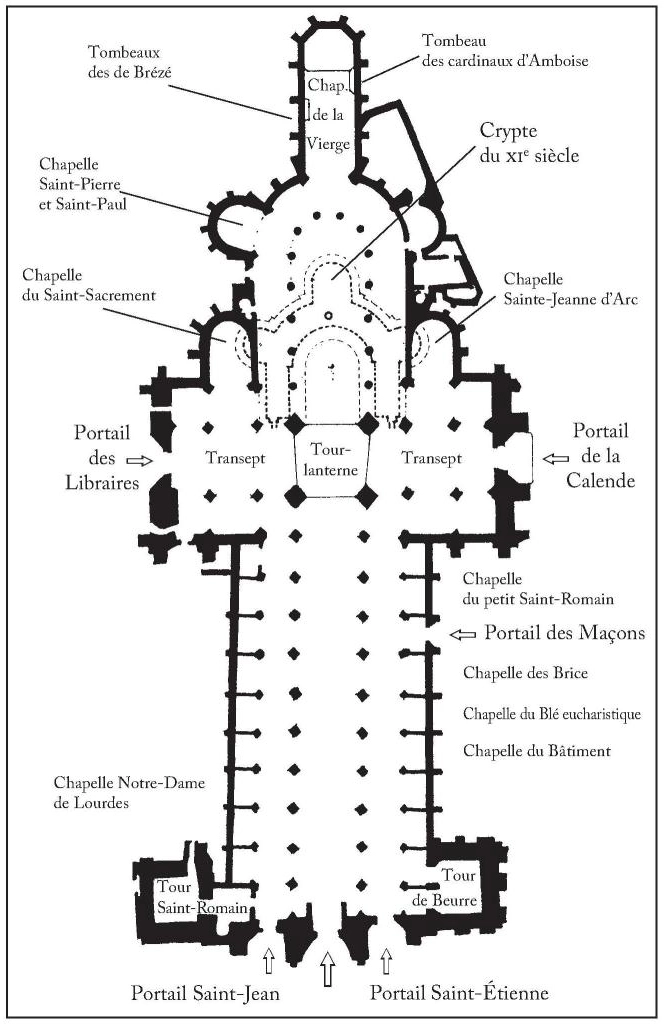
The side chapels and windows were added in the 1300’s. The impressive frontal tower, known as the Butter Tower because the Bishop raised money by letting people who paid eat butter during Lent, was built in the 1400’s. The church was damaged and restored during the French Revolution and the bombing of Rouen in 1944.

Tom and I took our time wandering around the cathedral. We spent most of our time being awed and amazed by the intricate carvings and details inside and out. I wished we had time for a more detailed tour because I know there are lots of stories and intricacies that we were not able to see.

There are about 150 tombs in the Lady Chapel, mostly Cardinals and Bishops of Rouen. There are also many more tombs in other areas of the Cathedral of Rouen. I snapped Tom’s picture next to Rollo, then we checked out the tombs of Richard the Lion-Heart, Henry the young King, and William Longsword. We also spent a long time looking at all the people carved into the outside of the cathedral. I don’t know how many there are, but the entire impressive edifice is covered with them. We could have stayed in the Cathedral for several more hours.

Unfortunately, we had to meet our tour to head out of town, and wanted a little time to visit some shops. I spotted a souvenir shop and picked up a demitasse spoon. Then we got some goodies at a boulangerie (bakery). Tom got a Nutella chocolate chip cookie and I got a traditional French eclair. Yum! We also walked around the open-air market and took in some of the sights and sound of French living. Many young parents were out pushing strollers and going from shop to shop for their daily food shopping.
Our time in Rouen was too short, but we loved spending time in the very impressive Cathedral of Rouen. I know Europe is full of old churches and castles, but I am appreciating each one we see.

